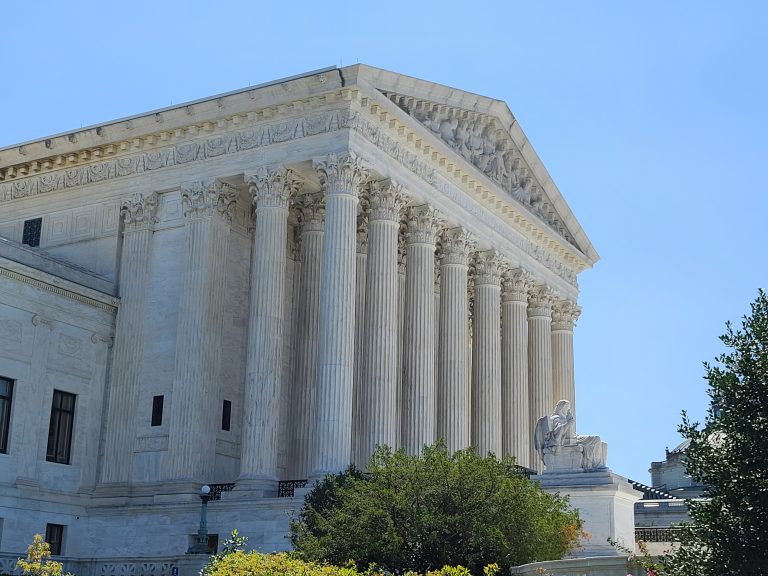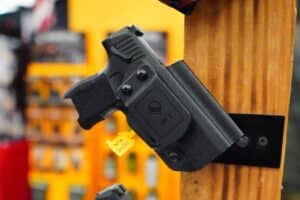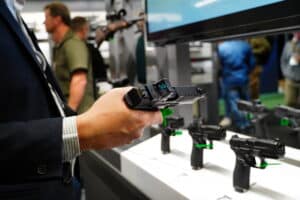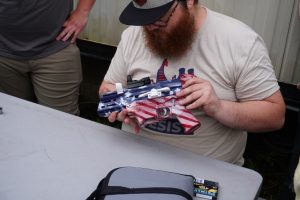The Supreme Court has issued its first significant Second Amendment ruling in over a decade, but what does it mean?
The immediate impact of the New York State Rifle and Pistol Association v. Bruen ruling will be on gun-carry laws in places like New York, California, and Massachusetts–anywhere that currently employs a “may-issue” permitting system for concealed carry. Those laws will be struck down or repealed in line with the Supreme Court’s ruling over the coming weeks and months. The legislatures will have to figure out how to replace them.
Instead of empowering government officials to make subjective judgments on who they feel has a “good reason” to carry a gun, denying the vast majority of otherwise qualified applicants in practice, state lawmakers will have to find another system for gun carry. Given the political opposition to gun carry in those states, it’s unlikely they will join most of the country and move to a permitless system. But they won’t have to anyway since the Supreme Court has left open the open of adopting a “shall issue” system, which keeps in place many of the requirements of “may issue” laws, such as a background check and training, but removes the ability of the issuing official to deny applicants subjectively.
While the Court only identified a handful of states with the now-unconstitutional policy, they are some of the most populous states in the nation and upwards of one in five Americans live there. So, the consequences of that short-term change will be immense.
For context, Florida and New York have similar populations, but their divergent gun-carry permitting schemes have left the Sunshine state with more than 2.3 million concealed-carry permit holders and the Empire state with 37,800. If New York and the other “may issue” states end up with a process closer to Florida’s “shall issue” law, millions more people will likely become licensed to carry over time.
Of course, the deep blue states with gun-carry laws affected by the ruling are unlikely to pass laws that exactly mirror gun-friendly Florida. But we don’t have to search too hard to see where those jurisdictions will likely end up.
That’s because Washington, D.C. has already gone through this transition process in response to multiple losses in federal court. First, the city saw its total ban on gun carry struck down. Then its “may issue” regime met the same fate a few years later.
Today, D.C. has a “shall issue” permitting system. However, it’s likely the strictest in the country.
Unlike other “shall issue” jurisdictions, including its neighbor Virginia, the city created a series of unique requirements and restrictions. Instead of merely requiring a background check and commonly available gun safety training, such as the popular NRA basic pistol course, D.C. created its own unique training requirements and certification program.
The result is a 16-hour training course which only a few trainers offer at a cost of several hundred dollars. That’s on top of the $110 those seeking a permit have to spend on application and fingerprinting fees.
Those who get permits also face a unique combination of restrictions on where they can legally carry. The gun-free zones include public transit, permitted events or events big enough that they should require a permit, and even areas surrounding those under special diplomatic protection as they move around the city.
Many of these restrictions were not brand new ideas. Instead, D.C. cribbed each from “shall issue” laws in places such as North Carolina and Florida and combined them into what is effectively the most difficult “shall issue” permitting process in the nation.
That’s likely why the city has only issued a few thousand permits since the law’s adoption. Of course, that’s still several thousand more than the city was issuing under its “may issue” law.
States like New York and California will almost certainly copy the city’s example as they search for ways to continue to restrict gun carry within the bounds set by the Supreme Court. They’re also likely to refuse to recognize permits from other states and, most likely, refuse to issue their own permits to non-residents (something federal courts forced D.C. to do, but which the Supreme Court did not touch on in its ruling).
All of these changes will limit the number of people legally allowed to carry a concealed gun in the affected states. However, millions more Americans are likely to be able to legally carry despite all of that.
But the ruling in Bruen is likely to have a more significant long-term impact than changing the way a handful of states regulate gun carry, even if that specific change does impact millions of Americans. That’s because the Court elaborated on the proper standard for deciding all Second Amendment cases moving forward. It explicitly rejected the “two-step” standard of review many lower courts had used to uphold restrictive gun laws and pointed instead to one based on the Second Amendment’s text and whether the restriction fits with historical gun regulations.
The Court then analyzed the New York case on that basis in a further example of how it wants to see gun cases decided. Ultimately, that could imperil any of the modern gun restrictions in the same states that have these “may issue” gun-carry laws. That could lead to a streak of gun laws being struck down.
That’s not a guarantee, though. Many observers thought the same thing 14 years ago when the Supreme Court established the Second Amendment protected an individual right to keep and bear arms in the landmark Heller case. The wave of invalidated gun laws never materialized.
Lower courts adopted their own methods of reviewing cases that ended with most controversial gun laws being upheld during challenges. The new standard, which relies at least in part on judges examining, often less-than-clear, historical records for analogous historical gun laws, seems ripe for disagreement over which rules are rooted in the American tradition of gun regulation.
The Supreme Court may have to step in fairly regularly to ensure lower courts review Second Amendment cases the way it wants them to.
Several cases are already pending, which will provide a good indication of how this all plays out. Duncan v. Bonta and ANJRPC v. Platkin, which challenge California and New Jersey’s magazine confiscation scheme, respectively; Bianchi v. Frosh, which challenges Maryland’s “assault weapons” ban; and Young v. Hawaii, which challenges Hawaii’s open carry permitting system, are the cases to watch. How they move through the courts in a post-Bruen world will be very instructive.







8 Responses
As a frequent traveler to several anti-self-defense states (NJ, HI, CA especially), I’m sure hoping their permitting changes allow for me to lawfully carry. I maintain 5 permits already, and have jumped through numerous hoops to do so. If that’s what it takes for me to carry in those states, so be it. (Doesn’t make me happy, but I’d still rather carry than not.)
Thanks for your analysis on this important case, Stephen. I know I can always count on your level-headed work, and it is greatly appreciated.
Thank you for the kind words!
The ruling is like to force “may issue” states into passing “shall issue” laws. But I think it’s less likely you’ll see them institute any kind of reciprocity. D.C. hasn’t done that. I don’t see anything in the ruling that directly requires it. So, it’s likely to fall by the wayside and I’m not even sure if they’ll issue non-resident permits either. Although, that might be something the federal courts could be more inclined to force.
It will likely take a few years to sort all of those details out as well.
I was reading earlier that New Jersey’s AG has dropped the justifiable need requirement for concealled carry permits but is still maintaining a requirement to be “endorsed by three reputable persons who have known the applicant for at least three years preceding the date of application” would be immediately challengable under Bruen as unduly burdening the Second Amendment. Wouldn’t this penalize new residents to the state? Will states also have to issue CCW permits to out-of-staters?
That seems likely to be challenged in court. As for non-resident permits, Bruen doesn’t directly address that issue.
I’m still a little confused: Is “strict scrutiny” not part of the testing of constitutionality? I’ll look for your podcast for next week, maybe you cover this analysis again with another learned observer? I’m going to see what Stephen Halbrook has to say, as well.
Thank you for covering this case and analyzing it here. I don’t go to “Ammoland” as much now, ’cause of my weakness to then start immersing myself into the resulting comments (yet, so entertaining sometimes!)
The Court rejected balancing tests such as the different tiers of scrutiny for judging Second Amendment cases. It had already done that in Heller but it was sort of re-emphasizing that point in Bruen. So, yea, it says courts should use intermediate or strict scrutiny to judge gun cases.
Rereading this, would the cost of obtaining a permit for a constitutional right be considered a voting poll tax and be subject to Bruen?
Probably not. The Roberts/Kavanaugh concerence makes it clear that “shall issue” permitting is constitutional. Permit fees would only be unconstitutional if they were excessive.